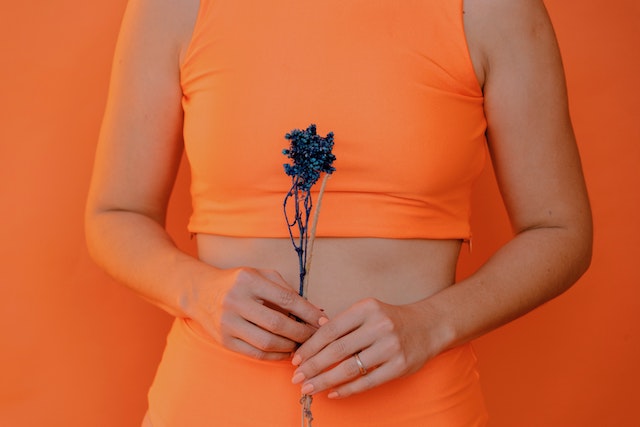Dr Andrea Wiessner discusses the homeopathic treatment of one of her patients
Crohn’s disease is a chronic inflammatory gastro-intestinal disease that can affect the whole digestive tract from mouth to anus but favours the lower part of the small bowels. It can cause symptoms of bowel inflammation, such as abdominal pain, diarrhoea and general malaise and it can cause ulcerations in the mouth or anus and anal fissures. But it is also sometimes accompanied by manifestations outside of the digestive tract, such as arthritis, inflammation of the eyes, inflammation of the sacroiliac joint and skin rashes. One of its complications is the stricture of parts of the bowels due to long standing inflammation which then usually requires surgical intervention. Acute episodes are usually treated with oral steroids and long-term maintenance treatment often consists of immuno-suppressive agents and medicines used in the treatment of some forms of cancer.
Pauline
Referred to me by her GP in November 2003, Pauline had been diagnosed with Crohn’s disease in 2000 but her GP mentioned in his letter that she probably had already suffered symptoms due to the disease in 1993. Pauline was 39 when I met her first and she told me that she had severe backaches with shooting pains in her 20s. The slightest movement would aggravate her pain. As she had injured her back as a child, she always thought the pain was due to this.Ten years ago, she developed an anal fissure with severe pains passing stools. This was eventually operated on in 2000, but three weeks after the operation she again started to have severe pain when passing stools and had ulcers in the back passage. She also had mouth ulcers at the time with extreme pain and she could hardly eat or drink. She started to feel unwell generally, had a high temperature, plus diarrhoea and stiff joints. Her ankles were swollen and she could hardly move or walk. Pauline had to stay off work for three months. At that stage she was referred to a specialist and diagnosed with Crohn’s disease. Since then she has had several flare-ups when she always has similar symptoms. The first sign is usually that she develops back pain and stiffness. Her joints swell up and become stiff and painful, which makes it very difficult for her to move. She also develops loose and foul smelling bowel motions, lately with blood and mucus. She has abdominal cramps and a permanent sense of a lump in her stomach. She sometimes loses control over her bladder and bowels and has had some accidents and feels extremely tired and exhausted and generally unwell. Pauline feels that these episodes can be triggered by stress and her symptoms can be aggravated by dairy produce. She frequently has night sweats and she also had episodes of iritis, inflammation of her eyes, in the past. She has already excluded dairy produce which has been beneficial. Her consultant had put her on Mercaptopurin daily which is a medicine also used in the treatment of leukaemia and Dexamethasone eye drops for episodes of iritis. Pauline lives with her partner and eight year-old son and works in customer service for a company selling legal books. She loves her job and loves speaking to the customers on the phone. She feels this is “fantastic”.Having a very bubbly personality, Pauline describes herself as over-enthusiastic and excitable and quite a happy person who loves to talk a lot. She says people sometimes find her “too much”. She is very impatient and can be short-tempered. She dislikes to be told things and dislikes change. She is a kind person and feels anxious if she has to speak in public.Of her general symptoms, she says that she is a chilly person, disliking the cold and that she perspires easily. She craves cheese and sweets and does not tolerate dairy produce. She needs a lot of sleep, often waking up at 2am but sleeps quite deeply on her right side. She talks during her sleep and her eyes are often half-open. She dreams a lot, recurrently of houses and rooms but also about teeth.
Treatment
When considering her case, I was mainly thinking of remedies such as Phosphorus and Sepia, but Nux vomica, Causticum and Thuja were also ones I considered for her constitutionally. The last as her son, whom I treated for asthma, had a good response to Thuja and sometimes children and their parents, in particular mother and child, can respond to the same remedy.Nevertheless, I eventually decided to give her Sepia. What swayed me was the strong focus on her back pain, which is very typical for Sepia, and symptoms such as the lump sensation in her stomach. I gave her Sepia 200c, three single doses within 24 hours. However, as Phosphorus is a good remedy for inflammatory bowel disease, I prescribed Phosphorus 30c twice weekly in four weeks’ time, more on a symptomatic level.When I saw her again two months later, she was already much better. Her energy levels had improved, her joints weren’t aching and the night sweats were better too. She could sleep through the night and had been able to stop Mercaptopurin one month before without any negative effects. This had not been possible in the past. She had noticed the improvement after the Sepia, but the night sweats improved when taking Phosphorus and did come back when she omitted a dose. Over the next six months she required two more doses of Sepia 200c and I advised her to continue with the Phosphorus regularly.
Recurrence
She then came back with a flare-up of her Crohn’s disease, experiencing burning pain in her abdomen, pain and stiffness in her back and hips, iritis and low energy levels. When I asked what had happened, she told me that she had applied for a better paid job in her company but that she didn’t get it. She was very angry, feeling it was terribly unfair and that people were conspiring against her. She just couldn’t understand why they hadn’t given her the job but did not talk to anyone about it.I told her to increase Phosphorus to once daily doses until her symptoms had settled and to repeat Sepia in the next higher potency, 1M at that stage. However, I told her to use her conventional medication if symptoms did not settle quickly. I also prescribed Mercurius sol 6c three times per day, when required, for her iritis.When I saw her next, two months later, she had much improved. The pain had settled, her joints and back were fine and her energy levels better. She had taken Mercaptopurin for ten days but stopped it again and had been well.Over the following two years, she had been really well apart from one chest and throat infection. She continued with Phosphorus 30c once weekly and Sepia 1M every few months.A year ago she came to see me with severe back pain again, associated with stiffness and pain in her hip. She had been run down and felt this might be a precursor for the Crohn’s again. She had already tried Sepia, but this time it did not seem to affect her symptoms. I prescribed Rhus tox 30c once daily until the back pain had settled and told her to then take Phosphorus 200c, three single doses within 24 hours. She has been fine since with one more minor episode of back pain, which responded well again to Rhus tox. She now takes Phosphorus 200c every few months if her general well-being deteriorates.
The remedies
The remedies that helped Pauline most were Sepia, the ink of the cuttle fish, and Phosphorus, a remedy from the mineral kingdom and an element from the periodic table. On first glance, this seems strange as they come from completely different sources. However, patients who require Sepia sometimes appear quite “phosphoric” and this might be due to the fact that the cuttle fish itself contains a lot of Phosphorus.In retrospect, I would say that Pauline is probably more of a Phosphorus type constitutionally. However, she had good responses to Sepia initially, possibly due to the overlapping symptoms of both remedies. The question why she responded and which one is her constitutional remedy is probably quite academic though, as the main thing is that Pauline’s symptoms improved and that she is on her path to health.
Phosphorus
Phosphorus means the “light-bringer” (the Greek word “phos” means light and “phoros” means bringing or bearing). Phosphorus is a poisonous substance and reacts violently. It is used in the manufacture of safety matches. On a physical level, Phosphorus’s destructive processes dominate the homeopathic picture, such as irritation and inflammation of the lining of organs, inflammation of nerves and the spinal cord and destruction of bones. Its picture also contains haemorrhages and general weakness. But just like the fire, destructive as it can be, it also brings warmth, light and sustains life. As Phosphorus brings light in the physical sense, the Phosphorus type of person is a light-bringer in other ways. He or she is a very open and extrovert person who makes you feel good in their presence. Often, when they enter the room you have a sense that the light has been switched on. No wonder that during homeopathic training, when everyone is usually eager to find his or her own constitutional remedy, everyone wants to be a “Phosphorus”! These individuals are very warm, sociable and sympathetic and very sensitive to all impressions. They are often quite artistic and imaginative but can also be full of fears and anxieties.I always find it fascinating how the richness of nature, contained within our remedies, if matched to the richness of life within our patients, can stimulate growth, health and wellbeing!






